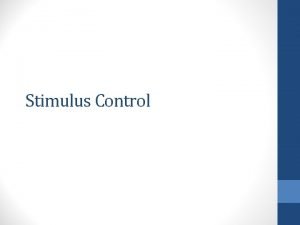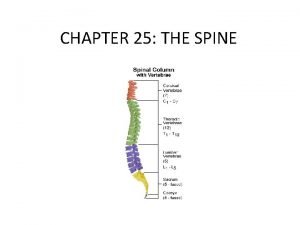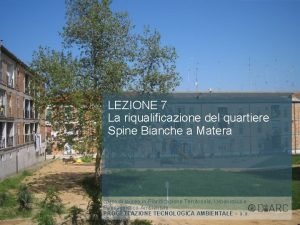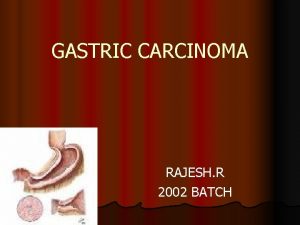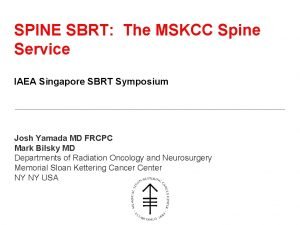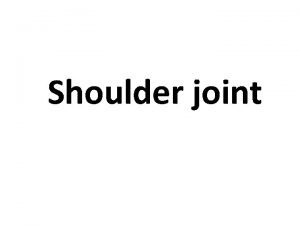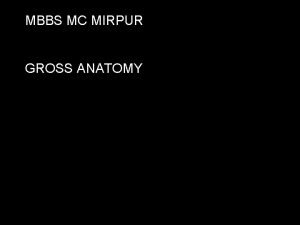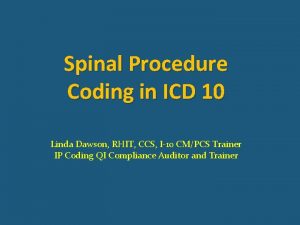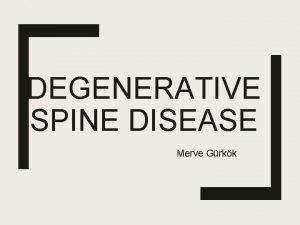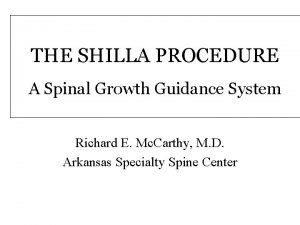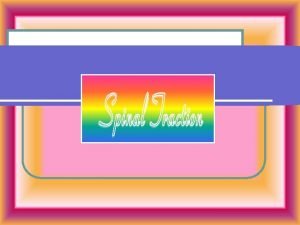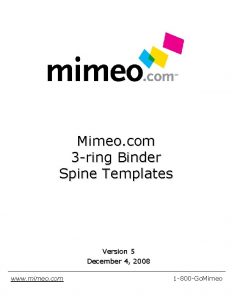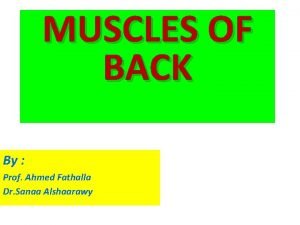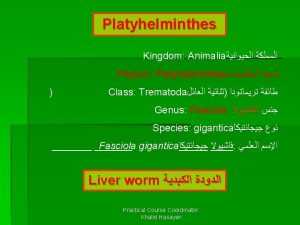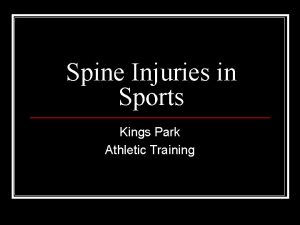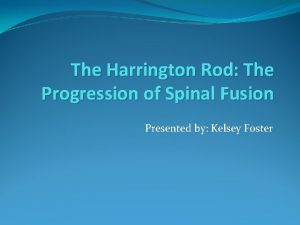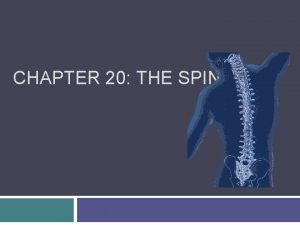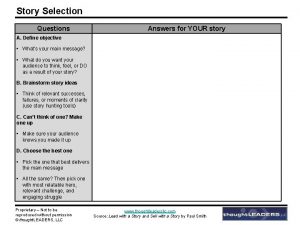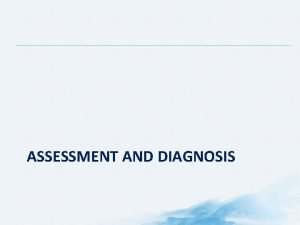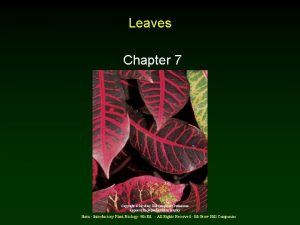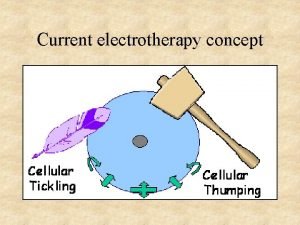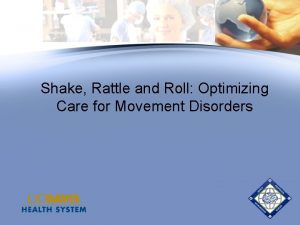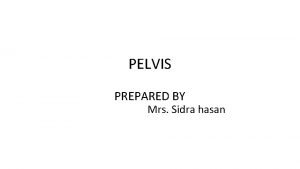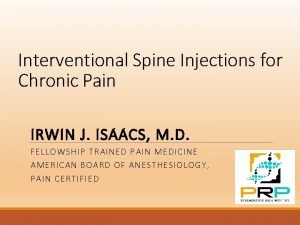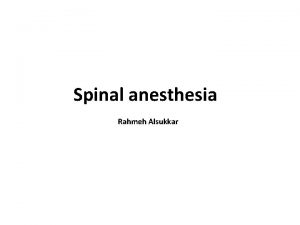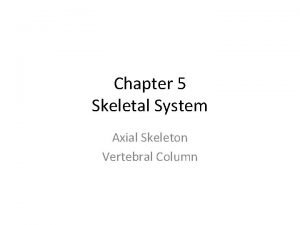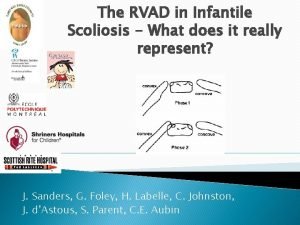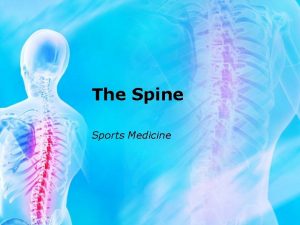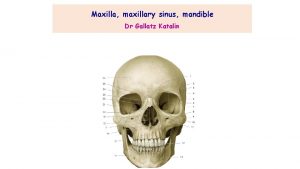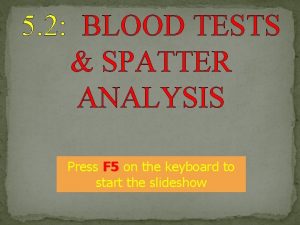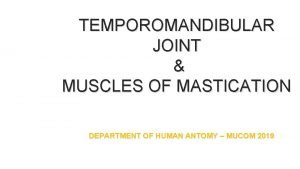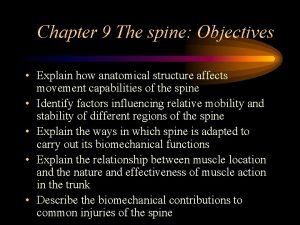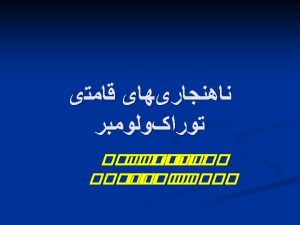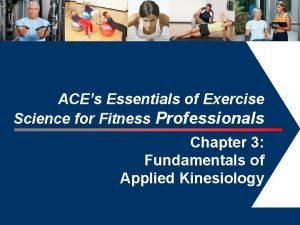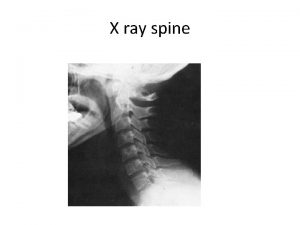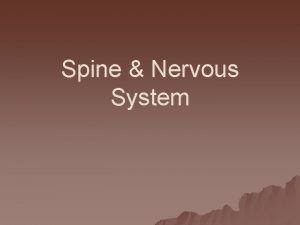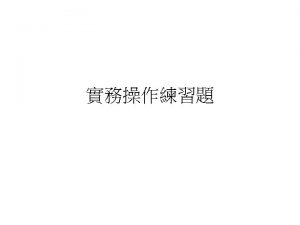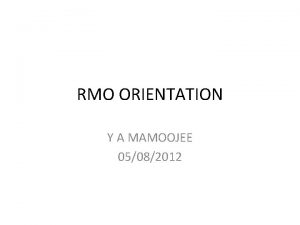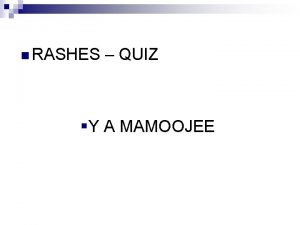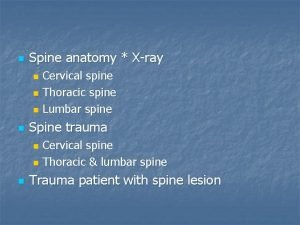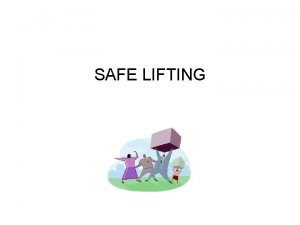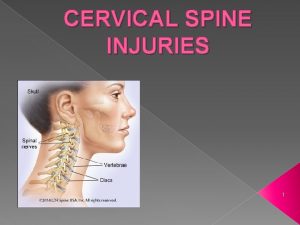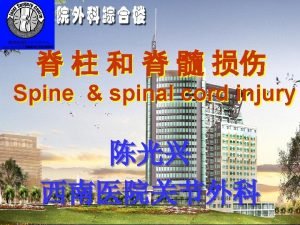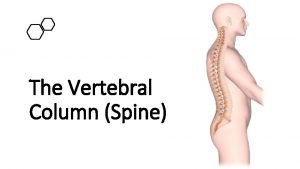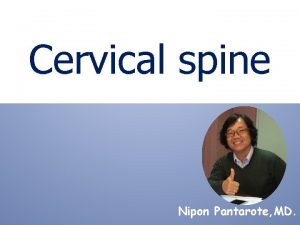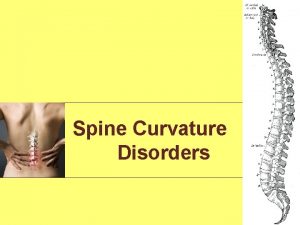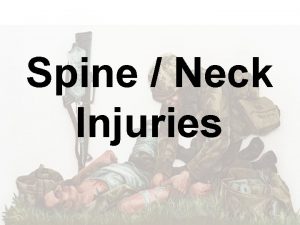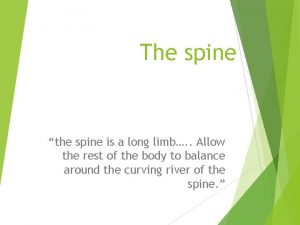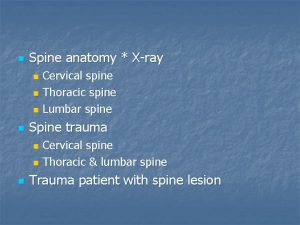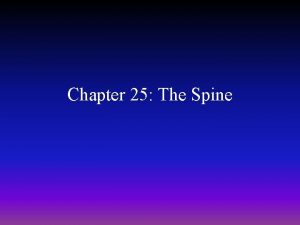C SPINE Y A Mamoojee Importance of Prompt















































- Slides: 47

C SPINE Y A Mamoojee

Importance of Prompt Diagnosis • Neck pain – > quadriplegia – > death • Delayed recognition can lead to irreversible s. c injury and permanent neurologic damage.

INDICATIONS • Who needs XR

NEXUS NO • Alcohol intoxication • Focal neuro deficit • Midline tenderness • GCS 15 • Painful distracting injuries

CANADIAN C SPINE RULES

CASE DISCUSSION • A person arrives by ambulance to ED on a backboard and a cervical collar after an MVA. • Speed of 50 km/hr • No LOC, no other injuries, no midline tenderness, BAL 0. 20. • Does he need imaging?

WHAT VIEWS?

• LATERAL • AP • ODONTOID • SWIMMERS • FLEXION/EXTENSION?

ANATOMY OF NECK • • LIGAMENTS BONES MUSCLES JOINTS

• • • Most important view Can see 80 -90% of injuries Interpretation: A - adequacy A - alignment B - bone C - cartilage D - disc S – soft tissue • • • A - Must have a view of C 7 – T 1 A - Use 3 lines 1. anterior vertebral line 2. posterior vertebral line 3. spino laminar line (base of spinous processes) 4 th line can be used ie. Tips of spinous processes •

• Check : • B - individual vertebrae • C - cartilage • D - disc • S - soft tissue • <7 mm at C 3 • <21 mm at C 7 • no more than vertebral body width at C 7 • Predental space – • 5 mm child • 3 mm adult • Fanning of spinous processes

• Open mouth view • Adequate if entire Odontoid and lateral borders of C 1 and C 2 visible • Check : • lateral masses of C 1 must align with Odontoid • bilateral symmetry • Important also for Odontoid fractures

SWIMMER’S AP

MECHANISM OF INJURY • • • 1. Flexion 2. flexion rotation 3. extension 4. axial compression 5. Other


WEDGE FRACTURE • STABLE • Compression fracture resulting from flexion • Features – – Buckled anterior cortex – Loss of height of anterior part of body – Anterosuperior fracture of vertebral body


FLEXION TEARDROP FRACTURE • UNSTABLE • Posterior ligament disruption and anterior compression fracture of the vertebral body • Prevertebral swelling • Tear drop fragment • Posterior vertebral body subluxation into the spinal canal • Spinal cord compression • Fracture of spinous process

• Mechanism – Hyperflexion and Compression – Excessive flexion of the neck in the sagittal plane, disrupts posterior ligament. • Example – diving into shallow pool


ANTERIOR SUBLUXATION • Disruption of the posterior ligament complex. Anterior subluxation of C 4 on C 5 is characterized by widening of the interspinous space (arrowhead), subluxation of the C 4 -C 5 interfacetal joints (arrows), and anterior rotation of the C 4 vertebra relative to C 5.

• • • Stable but potentially unstable during flexion Mechanism : hyperflexion Disruption of posterior ligament complex, anterior intact • • Stable – loss of normal cervical lordosis anterior displacement of body fanning of interspinous distance • • • Unstable – anterior subluxation >4 mm assoc. compression fracture >25% of affected body increase or decrease in normal disc space fanning of interspinous distance • •


BILATERAL FACET JOINT DISLOCATION • Complete anterior dislocation of the vertebral body • Mechanism – extreme hyperflexion of head and neck without axial compression • Unstable – very high risk of cord damage • Features – – complete anterior dislocation >50% of vertebral body diameter – Disruption of the posterior ligament complex and anterior longitudinal ligament – “Bow tie” appearance of the locked facets.


CLAY SHOVELLER’S FRACTURE • Fracture of spinous process C 6 -T 1 • Mechanism – powerful hyperflexion, usually combined with contraction of paraspinous muscles pulling on spinous processes (e. g. shovelling). Features – spinous process fracture on lateral view Ghost sign on AP – double spinous process of C 6/C 7 due to displaced fractured spinous process


UNILATERAL FACET JOINT DISLOCATION • Stable • Mechanism – simultaneous flexion and rotation • Facet joint dislocation and rupture of the apophyseal joint ligaments • FEATURES : • Anterior dislocation of vertebral body by <50% of the diameter • Discordant rotation above and below involved level • Facet within intervertebral foramen on oblique view • “Bow tie” appearance of the overriding locked facets

EXTENSION INJURIES • Excessive extension of the neck in the sagittal plane. • E. g. hitting the dash board in MVA


HANGMAN’S FRACTURE • • Fractures through pars interaticularis of the axis Unstable if occurs with facet dislocation Mechanism – hyperextension Features – – Prevertebral soft tissue swelling – Avulsion of anterior inferior corner of C 2 assoc. with rupture of the ant. Longitudinal ligament – Anterior dislocation of C 2 body – Bilateral C 2 pedicle fractures.


C 1 POSTERIOR ARCH FRACTURE • Hyperextended head • C 1 arch is compressed by occiput and C 2 spinous process • Odontoid process is normal • Stable • Distinguish from Jefferson fracture (unstable)

AXIAL COMPRESSION INJURIES


BURST FRACTURE • Fracture of C 3 -C 7 that results from axial compression • Spinal cord injury secondary to displacement of posterior fragments is common. • Mechanism – Axial compression • >25% loss of height of vertebral body • Stable • Needs CT or MRI



JEFFERSON FRACTURE • Burst type fracture of C 1 • Lateral displacement of C 1 masses • Fracture of anterior and posterior arches on both sides – quadruple fracture • Unstable – transverse ligament rupture • Soft tissue swelling is marked on Xray




ATLANTO AXIAL SUBLUXATION • Flexion and rotation causes the transverse ligament to rupture • Predental space >3. 5 mm in adults and >5 mm in children • Unstable



ODONTOID FRACTURES • 3 Types : – I Avulsion of tip at alar ligament (stable) – II Base of dens (unstable) – common, non union is a complication – III Involves body of C 2 (unstable)

 Similar
Similar Response prompt vs stimulus prompt
Response prompt vs stimulus prompt Thorcic
Thorcic Quartiere spine bianche matera
Quartiere spine bianche matera Carcinoid tumor metastatic liver prognosis
Carcinoid tumor metastatic liver prognosis Josh yamada
Josh yamada The clavicle and the scapula form the
The clavicle and the scapula form the Spine technologies (i) pvt. ltd
Spine technologies (i) pvt. ltd Proximal tibia
Proximal tibia Neural foraminal stenosis icd 10
Neural foraminal stenosis icd 10 Scottie dog lumbar spine
Scottie dog lumbar spine Shilla procedure
Shilla procedure Split traction table
Split traction table 4 inch binder spine template
4 inch binder spine template Muscles of thoracic spine
Muscles of thoracic spine Figure 13-1 the spinal cord
Figure 13-1 the spinal cord Schistosoma mansoni
Schistosoma mansoni Median sacral crest
Median sacral crest Who is in charge when spine boarding an athlete and why
Who is in charge when spine boarding an athlete and why Visceral reflex
Visceral reflex Harrington rod
Harrington rod Chapter 20 worksheet the spine
Chapter 20 worksheet the spine The story spine
The story spine Pqrst pain scale
Pqrst pain scale Spine vs thorn
Spine vs thorn Macro current in electrotherapy
Macro current in electrotherapy Nerve regions of the body
Nerve regions of the body Rattle spine nms
Rattle spine nms Sidra hasan
Sidra hasan Knee goniometry
Knee goniometry Cervical facet referral pattern
Cervical facet referral pattern Structures pierced spinal anaesthesia
Structures pierced spinal anaesthesia Chapter 5 the skeletal system vertebral column
Chapter 5 the skeletal system vertebral column Rvad scoliosis
Rvad scoliosis Boney spine
Boney spine Mandibula parts
Mandibula parts Griffen-ford model
Griffen-ford model Emory spine center
Emory spine center Spine blood spatter definition
Spine blood spatter definition Sentinel injuries in infants are
Sentinel injuries in infants are The story spine
The story spine Spine layout in retail
Spine layout in retail Mental spine
Mental spine Anterior superior iliac spine
Anterior superior iliac spine Clinical biomechanics of the spine
Clinical biomechanics of the spine Plumb line posture
Plumb line posture Trunk extensors
Trunk extensors Fabric connect extreme
Fabric connect extreme
